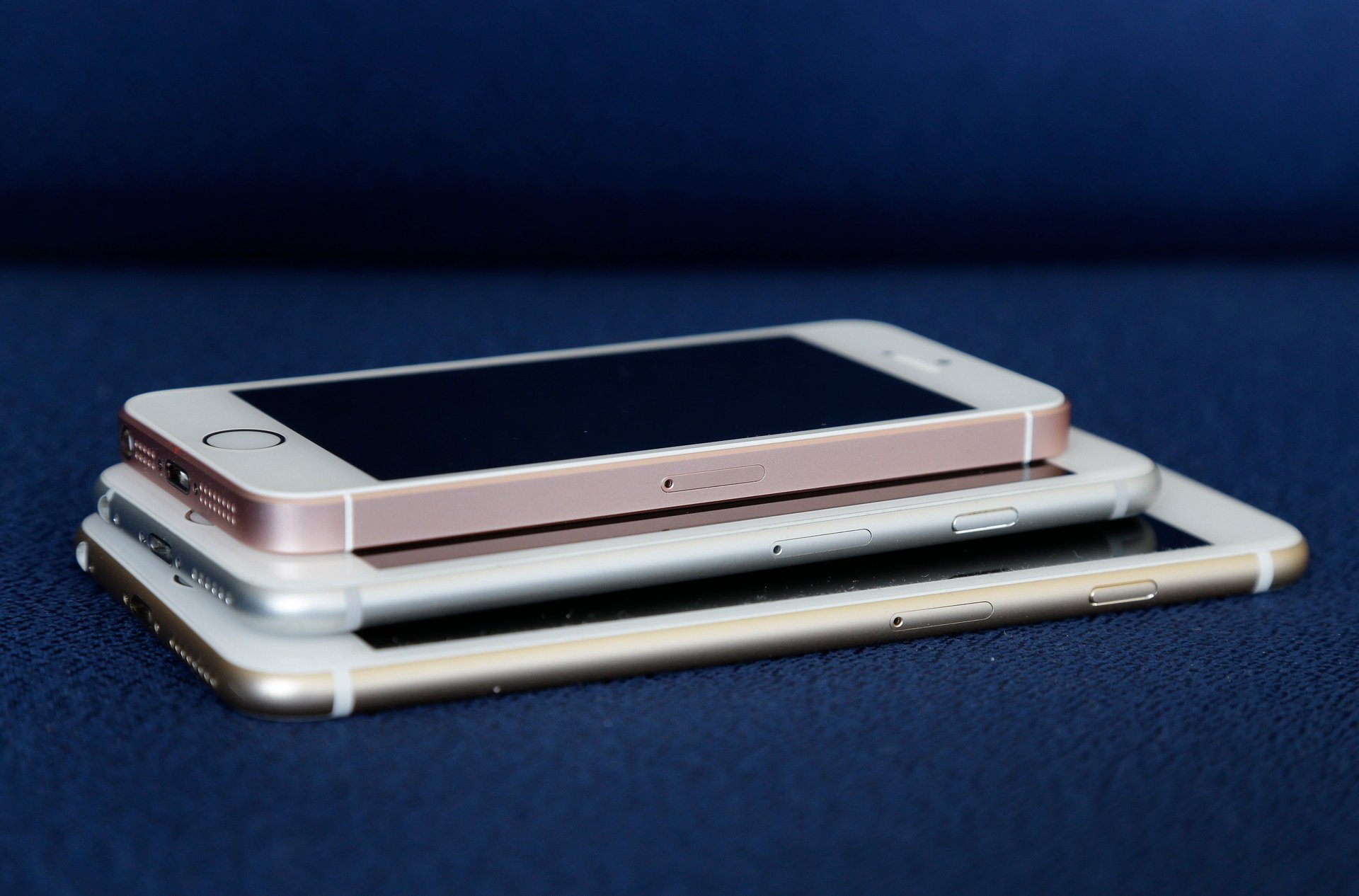Apple’s big screens are bad news for women, or anyone with small hands
Apple unveiled its latest line of products this week, and their homepage makes their focus obvious: “Big news.”


Apple unveiled its latest line of products this week, and their homepage makes their focus obvious: “Big news.”
With the new 5.8-inch iPhone XS, 6.1-inch iPhone XR, and 6.5-inch iPhone XS Max—not to mention the discontinuation of the 4-inch iPhone SE—Apple is clearly focusing on scaling up the size of their iPhone line.
That’s bad news for women, children, or anyone else with smaller hands.
For comparison, iPhones 6, 7, and 8 were all 4.7 inches, and the “plus” versions of those phones were 5.5. As a person with child-size hands (I once met an 8 year old with hands bigger than mine), the SE is the only iPhone I can comfortably use with one hand. I’m not the only one:
Many smartphone users report pain from holding, scrolling, and swiping on phones, and a review of research on the ergonomics of handheld devices concludes that bigger products, like large phones and tablets, often result in overextension of the thumb and wrist. Smaller phones allow users to type and swipe faster and more accurately, and when it comes to one-handed use, “smaller and lighter devices appear to provide more comfort and usability,” the review concludes.
Over at The Atlantic, Ian Bogost argues that one-handed phone use is exactly what Apple is trying to phase out. These bigger phones force us to use both hands and devote full attention to the screen, rather than the “casual” one-handed scroll. If this is Apple’s intention, those old habits may be hard to break; it’s likely that even with these bigger phones, users will carry on with swiping through their feeds one-handed, which will only be more difficult with a larger screen.
Women in particular lose out in another way: Bigger phones will be harder to fit into women’s pockets. According to an analysis of 80 pairs of jeans by The Pudding, women’s jeans pockets are, on average, 48% shorter and 6.5% narrower than men’s. While all men’s pockets they tested could fit a 5.8-inch phone (the size of the iPhone XS, the smallest of the new iPhone models), only 40% of women’s pockets would accommodate it.
It’s not just iPhones that are being turbo-boosted. The Apple Watch Series 4 is also slightly bigger than its predecessor. Both the small and large sizes have increased by 2mm each, to 40mm and 44mm, which looks awfully large on a small-wristed person.
If you prefer your iPhone SE or Series 3 Apple Watch, be sure to take good care of them. It’s bound to be a few years until smaller options return, if ever.